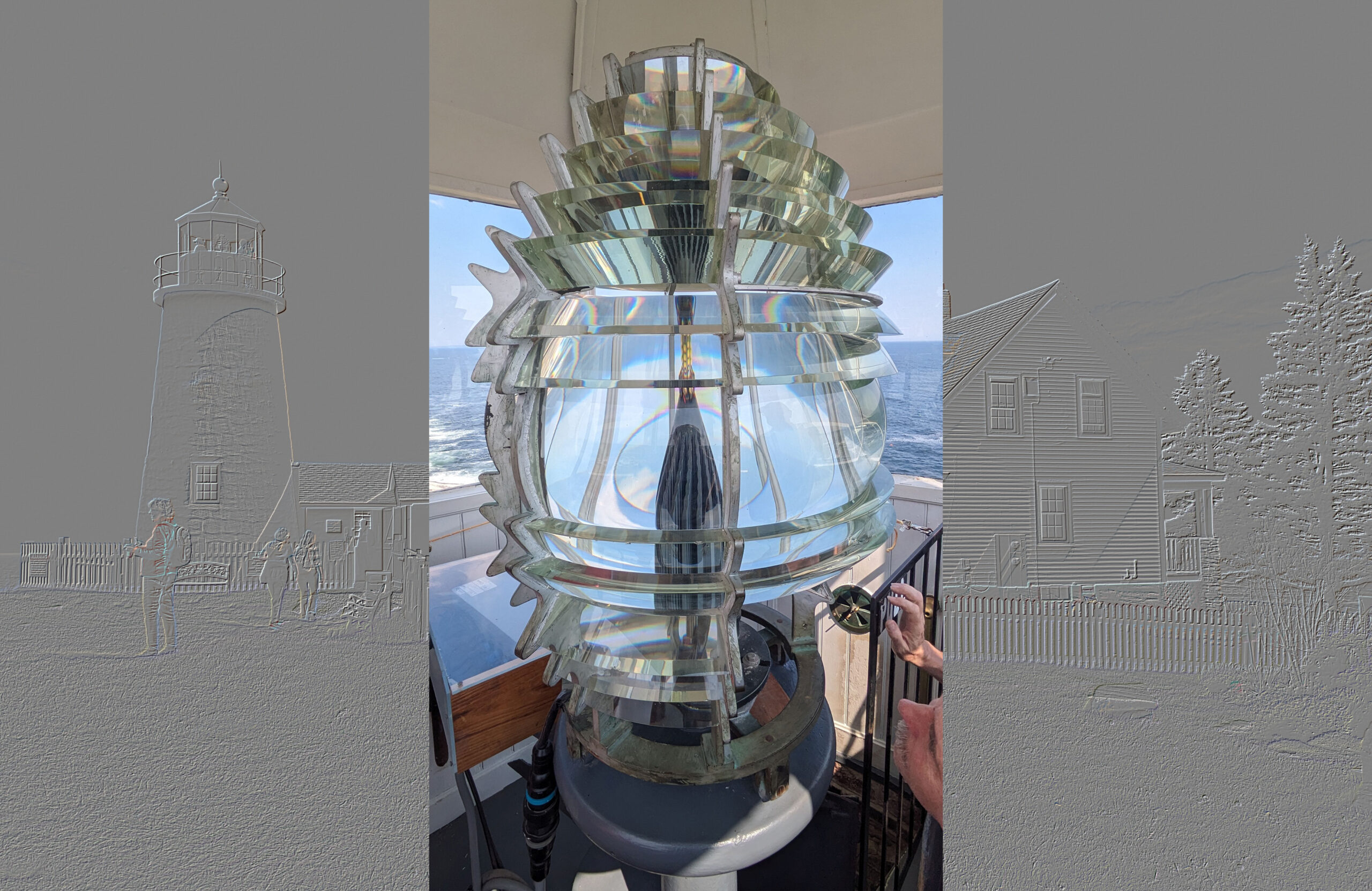
[Image above] Illustration showing the operation of an augmented reality headset based on new multifunctional nonlocal metalenses developed by Columbia University and City University of New York researchers. Credit: Malek et al., Light: Science & Applications (CC BY 4.0)
In line with last week’s CTTs on new methods and models to aid in device miniaturization, today’s CTT looks at a new technology that will help enable smaller optical products—metalenses.
Metalenses are flat, engineered lenses constructed of nanoscale arrays of columns or fin-like structures. This design allows a metalens to focus light without causing image distortion, and so a single metalens can focus light in lieu of multiple curved glass lenses.
Since the efficiency of metalenses was first demonstrated in 2016, there have been numerous advances involving these materials. Today, we highlight another metalens advancement published last August—a metalens that offers both spatial and spectral control of light.
Traditionally, metalenses offer either spatial or spectral control of light, not both, based on the structure of the nanoscale arrays.
In “local” metalenses, each metaunit (nanoscale array) operates independently. Such localization allows for good spatial control of light, but it limits spectral control because the wavefront deformation inevitably extends over a wide frequency range.
In “nonlocal” metalenses, each metaunit works together to support a collective mode that governs the device response. So, nonlocal metalenses can produce sharp spectral features, but they typically cannot spatially tailor the optical wavefront.
In the recent open-access paper, researchers from Columbia University and the City University of New York explain how previous theoretical work they published in 2020 (here and here) indicated that spatial control with nonlocal metalenses should be possible. The new study aimed to experimentally confirm this possibility.
The operating principles of their nonlocal, wavefront-shaping metalenses are rooted in the physics of photonic crystals. Photonic crystals are periodic dielectric structures that either allow or forbid the propagation of electromagnetic waves of certain frequency ranges.
Within photonic crystals, a phenomenon called bound state in the continuum (BIC) may occur. BICs refer to areas of the crystal where, at the right angle, a specific wavelength of light will get “trapped” (confined) to the crystal’s surface while the rest of the light freely passes through. By manipulating the crystal’s structure, the wavelength and angle of this special state can be readily engineered.
The Columbia-led researchers hypothesized that introducing BICs into a nonlocal metalens would allow them to spatially tailor the optical wavefront.
To create BICs in a metalens, the researchers showed in their previous theoretical work that breaking the in-plane inversion symmetry of metaunits may create a quasi-BIC. Through modeling, they created a “library” of quasi-BICs based on introducing different perturbations into a lattice called the p2 plane group.
In the new study, they used this library to guide fabrication of metalenses made of amorphous silicon on a glass substrate. Their metalenses successfully allowed for both spectral and spatial control of light in the near-infrared spectrum. Additionally, the metalenses could be stacked to achieve versatile multispectral wavefront shaping.
To demonstrate the utility of the new multifunctional nonlocal metalenses, the researchers simulated their use in augmented reality glasses (see this article’s header image). The metalenses could reflect contextual information to the viewer’s eye at selected narrowband wavelengths while permitting an unobstructed broadband view of the real world. As such, it did not require extra polarizers or beam-splitters to attenuate real-world light, thus reducing the size and weight of the headset.
A Columbia University press release says the researchers’ next steps are to experimentally demonstrate the metalenses’ ability to control light in the visible spectrum. They are also exploring the possibility of including more than two perturbations in a single metalens.
The open-access paper, published in Light: Science & Applications, is “Multifunctional resonant wavefront-shaping meta-optics based on multilayer and multi-perturbation nonlocal metasurfaces” (DOI: 10.1038/s41377-022-00905-6).
Author
Laurel Sheppard
CTT Categories
- Material Innovations
- Optics


